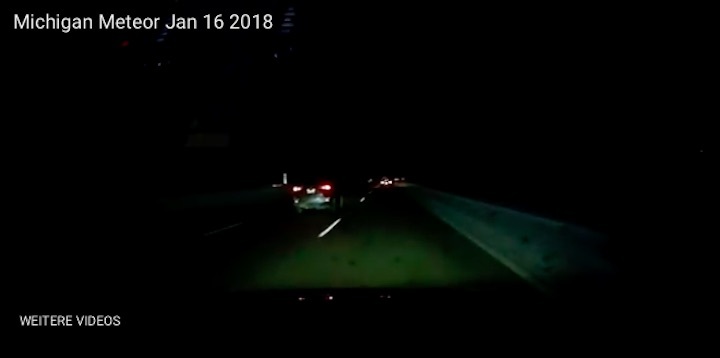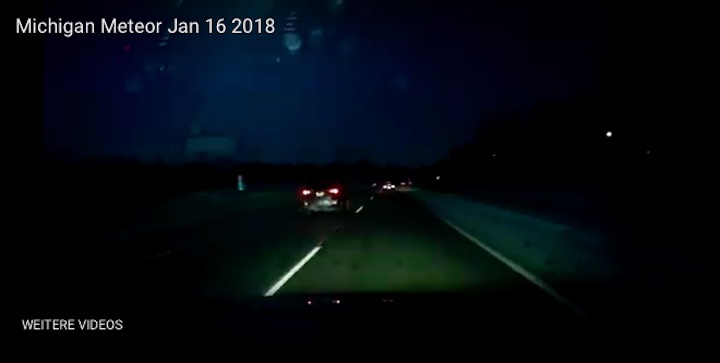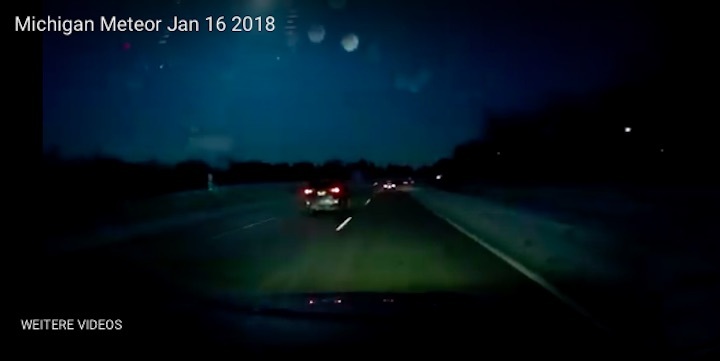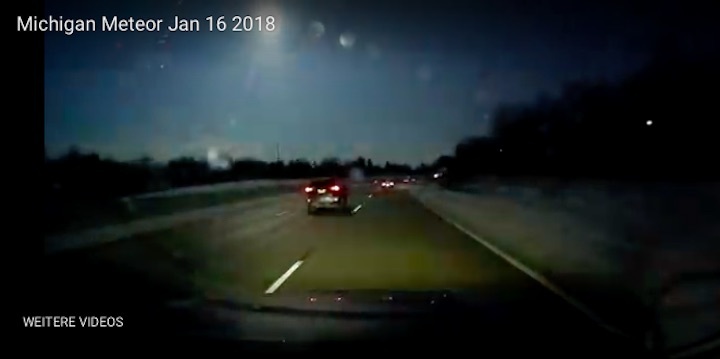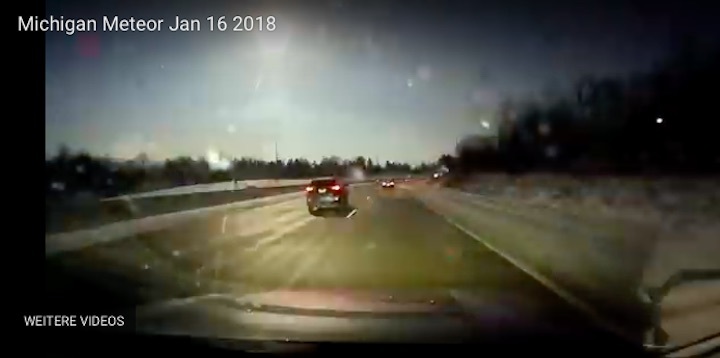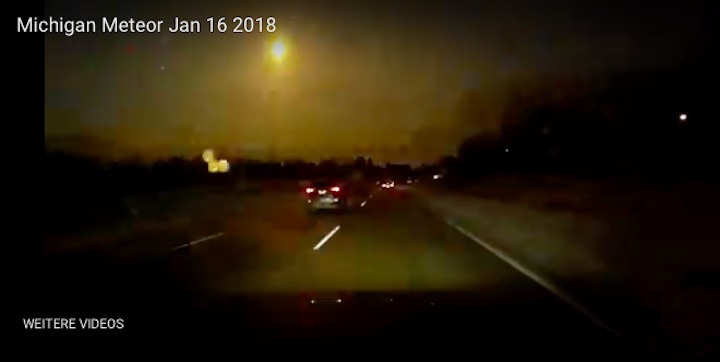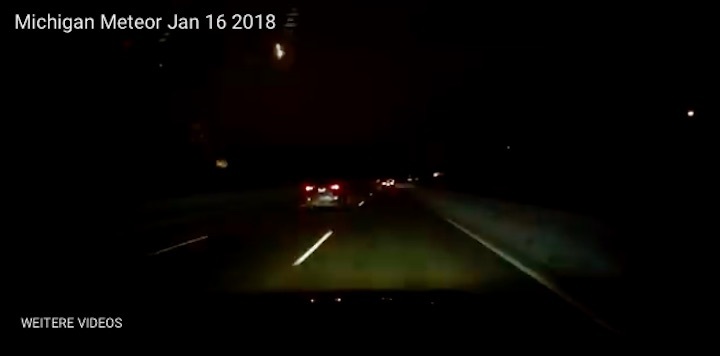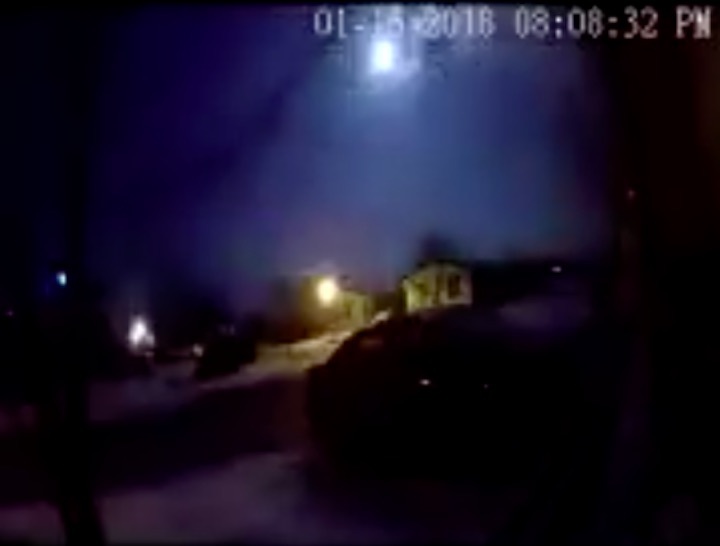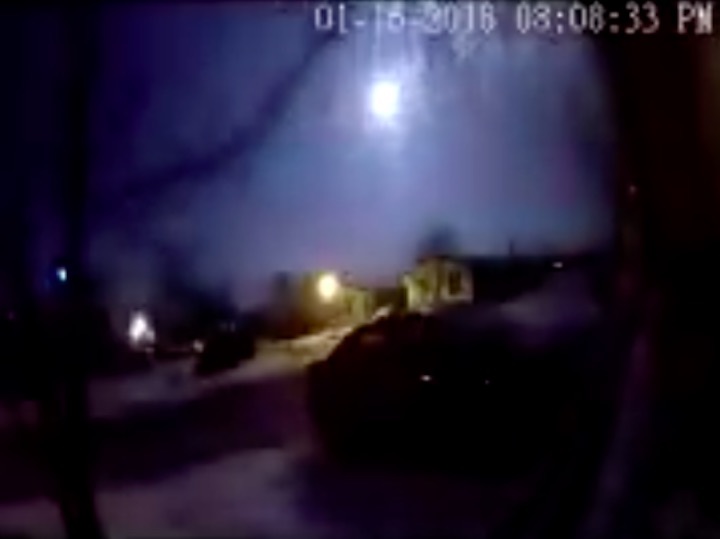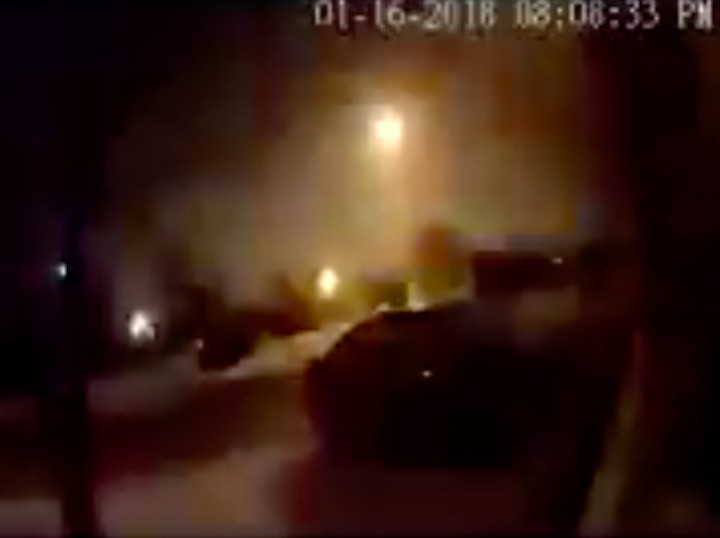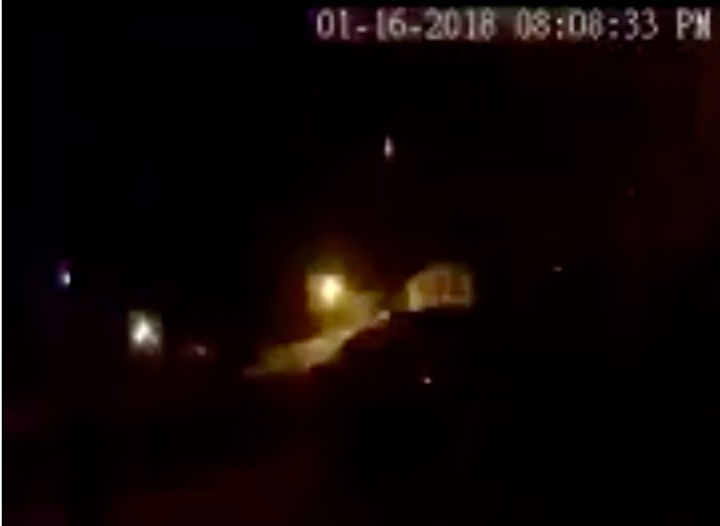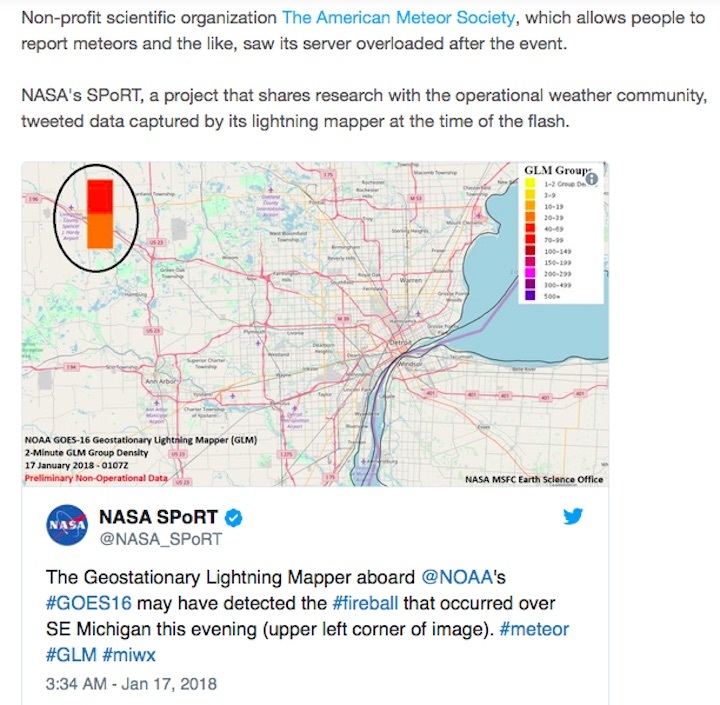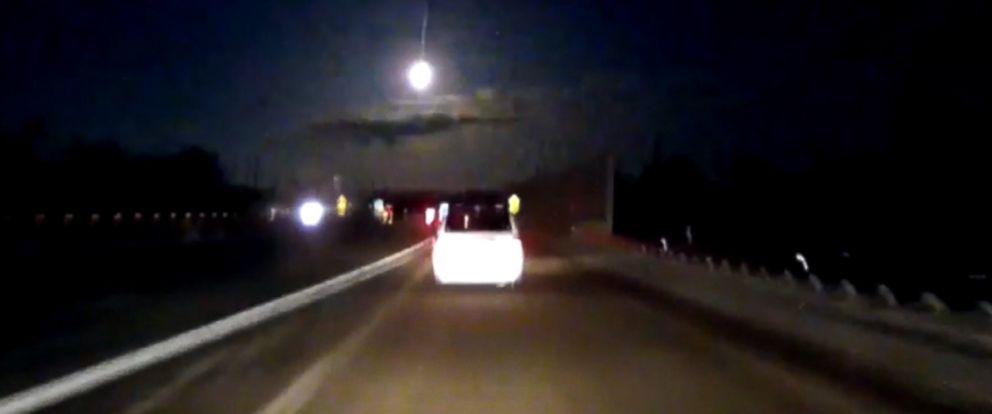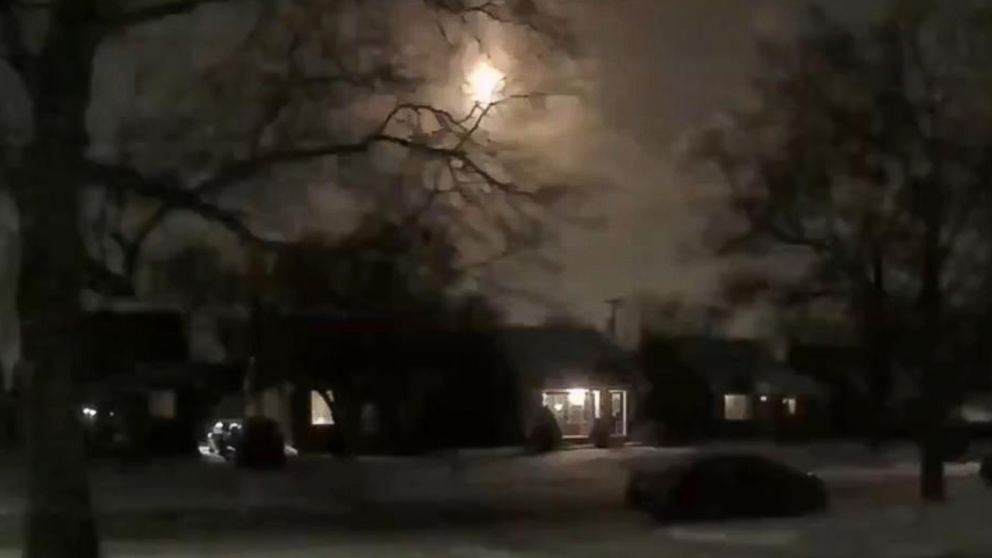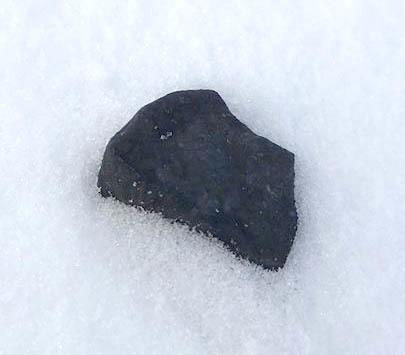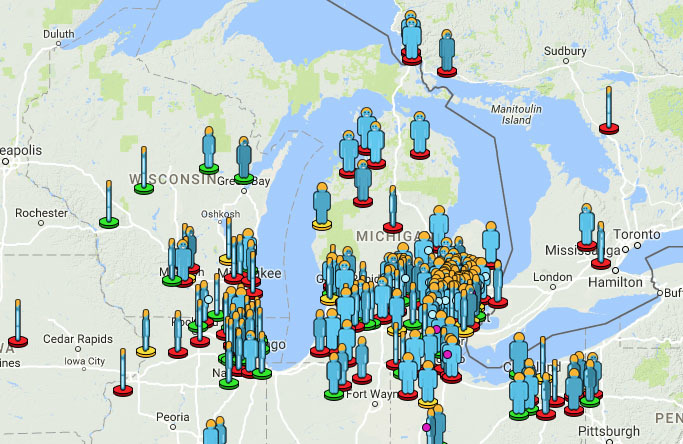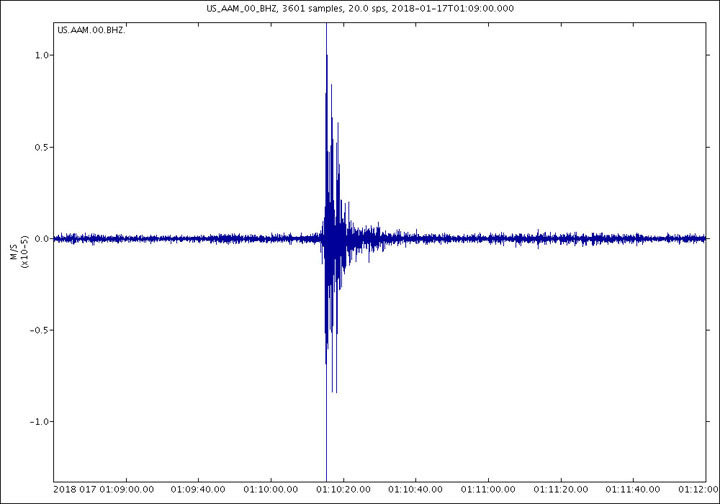A meteor entering the Earth’s atmosphere exploded in Michigan’s sky overnight in a spectacle that briefly illuminated the city of Detroit. The US Geological Survey confirmed the meteor had entered the atmosphere about 5 miles from New Haven, Michigan (about 36 miles north of The Motor City), and registered a force equivalent to a magnitude 2.0 earthquake. Videos posted across social media networks showed a bright spot streaking across the sky before exploding, flooding the darkness with light. Social media users who witnessed the event said the flash of light was followed by loud booms several minutes later.
NASA officials confirmed to The Detroit News that its meteor camera caught the event at 8:08pm at Oberlin College in Ohio (see below). NASA is currently analyzing the meteor’s data, and said the explosion was a “huge event” and rare for Michigan. Bill Cooke from NASA’s meteoroid environment office in Alabama told The Detroit News he estimates the meteor was about one or two yards across, weighed more than one metric ton and traveled between 40,000 to 50,000 miles to get to Earth.
NASA defines meteors (or shooting stars) as rocks or debris in space that fall through a planet’s atmosphere. The bright trail of light emitted is caused by friction with the atmosphere. Meteorites are the surviving pieces that make it to the ground. NASA says it’s tracking the trajectory of the meteor to see if any meteorites landed on Earth.
Quelle: The Verge
+++
NASA officials confirmed its meteor camera spotted the material at about 8:08 p.m. at Oberlin College in Ohio. The image shows a tiny white ball traversing the screen until a bright flash is seen when it appears to make impact. NASA
The flashing light and loud boom felt across Michigan and seen as far away as New York City and parts of Canada on Tuesday night was a meteoroid entering the atmosphere, according to NASA.
NASA officials confirmed its meteor camera spotted the event at about 8:08 p.m. at Oberlin College in Ohio. The image shows a tiny white ball traversing the screen until a bright flash is seen when it appears to make impact.
Around the same time, the U.S. Geological Survey reported a “M 2.0 Meteorite,” referring to magnitude, about 5 miles west of New Haven.
The nighttime spectacle was a “huge event” astronomically speaking, and rare sight for Michigan, said Bill Cooke with NASA’s meteoroid environment office in Alabama. “It is definitely a meteoroid.”
The nighttime display quickly set social media aflutter with posts about UFOs and explosions as locals and experts alike marveled over the cinematic scope.
It was an unusual sight for Mike Tarkowski, who was sitting at home in Milford watching TV on Tuesday when what had been a typical night suddenly became anything but.
At about 8:10 p.m., he spotted “an extremely bright light” illuminating his otherwise dark room.
“All of the sudden, the whole yard started getting brighter, kind of yellowish-orange, like a flashbulb, then got black ... ,” he said. “It was something big and it was something up in the air.”
NASA defines “shooting stars” or meteors as bits of interplanetary material falling through Earth’s atmosphere and heated to incandescence by friction. They’re called meteoroids while hurtling through space, then become meteors for the few seconds they streak across the sky and create glowing trails, according to the agency.
The earth periodically encounters a few small asteroids or large meteoroids, Cooke said, “and when they hit the atmosphere, they create these very bright fireballs.”
NASA is studying the trajectory and analyzing data, but Cooke estimates the meteoroid Tuesday appears to have been about one or two yards across, weighed more than a metric ton and traveled 40,000 to 50,000 miles to Earth.
“Over Michigan, they’re rare,” he said. But elsewhere on the planet, “they happen a few times every month.”
Meteoroids may be common, but the associated fireballs, or bolides, “are extremely rare,” said Bob Trembley, a former outreach officer for the Warren Astronomical Society and volunteer NASA/JPL solar system ambassador who has long studied the phenomenon. “Anybody that saw it is lucky,” he said.
Plenty did, judging by Twitter and the National Weather Service, which said it received reports from around Metro Detroit of “a flash and a boom.”
“Somebody was reporting lightning with thunder,” said meteorologist Cory Behnke. “We checked our observational data here, and I can tell you we’ve not had any lightning.”
Sightings or those hearing the boom were reported on Twitter from Michigan and beyond.
“Just saw a meteor streak across the sky just now,” one Twitter user tweeted. “It was followed by loud booms about 3 minutes later. Bright blue and orange fire. So glad I saw it!!”
Another wrote: “Think a meteor whizzed by in Brighton, Michigan. Saw a blue light and heard a rumble. Sky is clear no snow.”
The Ingham County Office of Homeland Security & Emergency Management, which fielded multiple 911 calls about the event, tweeted: “All indications are that it was just a natural meteor fireball.”
Danny McEwen Jr. was driving on Fish Lake Road in Holly when he noticed a bright streak of light behind him and then saw the fireball.
“I went to turn and I noticed a ball of flame coming at an angle,” he said. “It just blew up into a bunch of sparks. I didn’t even know what to think. It was kind of odd how orange the sky was behind me and this blaze of flame out of nowhere.”
The incident was so widespread that McEwen’s father said the orange hue lit up his living room and friends working in Brighton told him they saw the streak overhead. In Oak Park, another acquaintance reported hearing a boom she thought was her son having knocked his TV off his dresser.
Shortly after the event, DTE Energy customers called the utility to report they heard loud booms and saw flashing light, spokesman Brian Smith said.
The sound came from the meteor entering the atmosphere, Cooke said.
Meanwhile, the appearance apparently generated such interest, the website for the American Meteor Society and the International Meteor Organization temporarily shut down.
“Major event in Michigan. Server is getting overloaded. We’ll be back asap, check back soon,” read a message on the site, which directed visitors to report fireball sightings online.
NASA officials will track the meteoroid’s orbit and learn if any meteorites landed, Cooke said.
Those fragments typically leave an oval pattern on the ground that scientists and enthusiasts are likely to search for, Trembley said. “I’m pretty sure there are going to be hunters out there looking for it.”
Quelle: The Detroit News
---
Update: 18.01.2018
.

